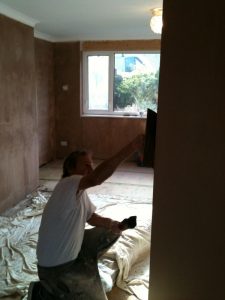With plastering, for the best results, you have to invest time into preparation. This is something we know very well thanks to our thirty plus years of experience. As the saying goes, if you fail to prepare, prepare to fail. That is something you definitely don’t want with plaster. Luckily, you can avoid the risk by working with us. We have the most talented plasterers Sheffield can offer.
In this post, we will be providing a rundown of the most important things you have to do prior to plastering. It will give you an idea of just how much goes into getting a great finish. Plus, you will be in a better position to attempt jobs yourself.
What surface do you have?
 To begin with, you have to determine what kind of surface it is you are going to work on. The preparation will vary because of differences in surfaces. Any substrate you are going to apply plaster to shall have a certain level of suction. We use this professional term to refer to how absorbent it is. To get an excellent finish, you must manage it.
To begin with, you have to determine what kind of surface it is you are going to work on. The preparation will vary because of differences in surfaces. Any substrate you are going to apply plaster to shall have a certain level of suction. We use this professional term to refer to how absorbent it is. To get an excellent finish, you must manage it.
One surface is plasterboard, which is probably the easiest to work with. This is because it is low suction. You can plaster right onto it. However, any screws you use to fix your board to batons have to be countersunk and filled to produce a flat surface. Plus, those joints where your boards meet will require taping to cover them.
Brick is another surface. There may be situations where you need to plaster straight onto brick, especially if you are doing a patch-up job or rendering the exterior. Because brickwork is high suction, to get a decent finish, you have to brush the bricks. Do this using a wire brush. Then you have to add a bonding layer prior to plastering to help your plaster hold.
There is also existing plaster, paint, wallpaper, and Artex. These are harder surfaces to work with and need more preparation. If you have to work with one of them, then you have to follow the right steps. For a stable and decent hold, the surface beneath has to be in as clean and good condition as possible prior to plastering. Let us know if you want to work with the top plasterers Sheffield has.
Stripping work
If you do have any wallpaper or paint, you may need to strip it off to begin with. This is challenging work but you need to scrape or steam until it is all gone. Should you fail to do this, your fresh plaster is going to look rather patchy. At worst, it will peel off. When you are done with the paint and wallpaper, get rid of residual grease and moisture. This will allow your plaster to hold better.
Check your walls for damage
What you are looking for here are cracks and loose plaster. Use filler on any small holes. If you encounter any big areas with flaky plaster, hack them back and use a bonding agent. Make sure everything is nice and smooth.
Final steps
Lastly, switch off the power at the consumer unit or fuse board. You can then unscrew or remove light fixtures and power sockets before you do any work. This will make it safer and easier to work, while also giving you a better finish.
Work with the top plasterers in Sheffield
At G Lee Plastering, we have gained an extremely positive reputation over the years. This is because we always provide clients with reliable top tier services. You can trust us for things like skimming, rendering, and internal plastering.
So, if you would like to work with the leading plasterers Sheffield has, please give us a call. We can give you a quote, advice, and more.